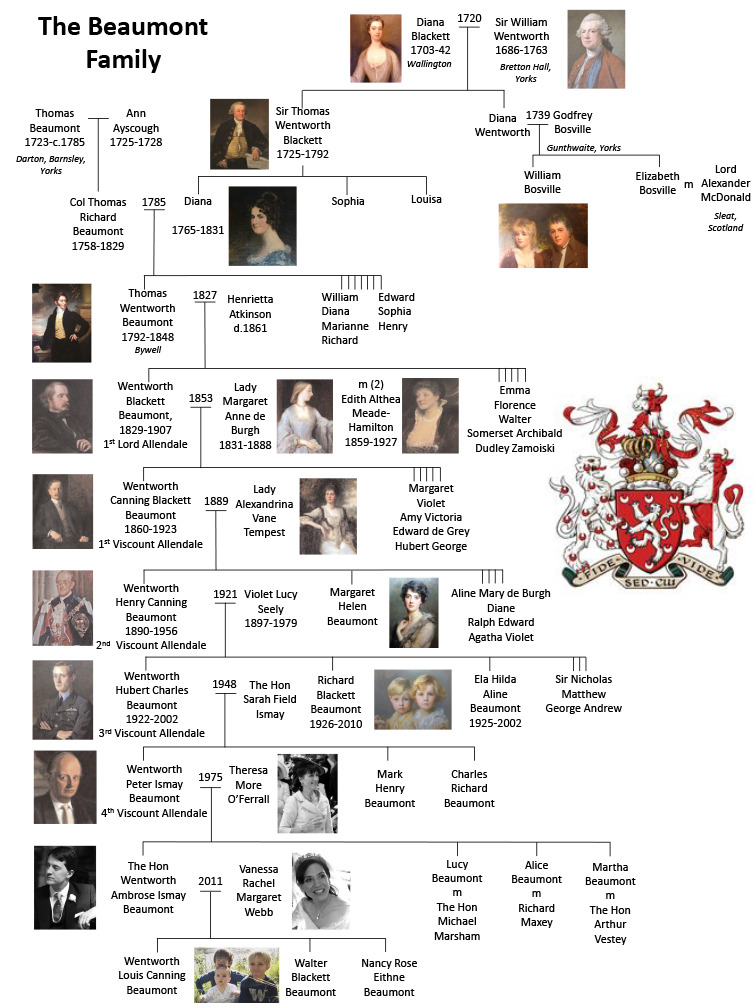History of Bywell Hall
Home to the Beaumont family since 1810, the Palladian building sits by the River Tyne at Bywell, Northumberland. The privately owned 18th century country house is a Grade II* listed building set in extensive parkland and houses an important collection of furniture and art.
The manor of Bywell and Bywell Castle were owned by the Neville family in the 14th century but following the attainder of Charles Neville, 6th Earl of Westmorland for his part in the Rising of the North the Neville estates were forfeited and Bywell was sold in 1571 by the Crown to the Fenwick family.
William Fenwick (son of John Fenwick High Sheriff of Northumberland in 1727) built the new house at Bywell to designs by architect James Paine in 1760. Alterations were made by John Dobson in 1817, and further extensions were added in the 1890s. The estate was sold to Thomas W Beaumont for £145,000 early in the 19th century and the house was improved by the Beaumonts, with the assistance of architect John Dobson, in 1827 and further altered later in the 19th century. Bywell Hall is now home to The Hon Wentworth Beaumont and his wife and three children.
The Beaumont and Blackett ancestors of Allendale family were closely involved in developing the lead industry in the north-east of England from the seventeenth century onwards. Many of its remains can still be seen in the area, including the Killhope lead mining museum in Weardale, in the East Allen valley and at the site of the Dukesfield smelting mill in Hexhamshire, with its iconic arches. The Estate was pleased to support a highly successful lottery-funded conservation and heritage project centred on Dukesfield a few years ago by giving a lease on the site to the community group in charge, and making archives available for detailed study. The work of the archives team has continued, and the fruits of their transcription work are available in the free online Dukesfield Documents research resource. This now contains over two million words of searchable content in letters, reports and other material drawn from many archival sources. It’s a great resource for those researching the Blacketts, the Beaumonts and many other families and aspects of north-eastern life over a two hundred year period. The Dukesfield project’s website also has other information on the site, a downloadable walk leaflet for the area, and information on how this important industrial site connected with the rest of the region.
History of the Beaumont family

Fishing at Bywell
The Bywell beat of the River Tyne is one of the best stretches of salmon fishing in England. Running directly through the estate, the beat is 2.5 miles long and fishing is from both banks.
